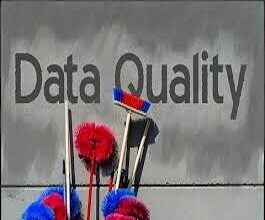 When it comes to deriving a compelling ROI from Business Intelligence, having a bomb-proof Business Intelligence strategy is pretty fundamental. And at Matillion, we’ve seen the inner workings of countless businesses’ Business Intelligence strategies.
When it comes to deriving a compelling ROI from Business Intelligence, having a bomb-proof Business Intelligence strategy is pretty fundamental. And at Matillion, we’ve seen the inner workings of countless businesses’ Business Intelligence strategies.
 When it comes to deriving a compelling ROI from Business Intelligence, having a bomb-proof Business Intelligence strategy is pretty fundamental. And at Matillion, we’ve seen the inner workings of countless businesses’ Business Intelligence strategies.
When it comes to deriving a compelling ROI from Business Intelligence, having a bomb-proof Business Intelligence strategy is pretty fundamental. And at Matillion, we’ve seen the inner workings of countless businesses’ Business Intelligence strategies.
Ready to be shocked? Many of them are flawed – focusing on the wrong things, in the wrong order, and going about delivering an ROI in the wrong way. The bottom line: the best Business Intelligence strategy strives to keep Business Intelligence focused, benefit-led, and affordable.
For Business Intelligence to be successful, it’s clear that you have to have a Business Intelligence strategy. Business Intelligence has a lot to deliver, and a plan for achieving those deliverables—and then turning them into cold, hard cash—is an obvious first step.
That said, Business Intelligence today isn’t the same as Business Intelligence ten years ago. It’s nimbler, more results-focused, cheaper, faster to deploy, and offers far more by way of end-user ease of use.
The trouble is, companies’ Business Intelligence strategies haven’t always caught up with this. They’re still doing Business Intelligence 2003-style—and not 2013-style.
The difference? Read on.
Forget the ‘Big Iron, Big Bang’ approach to Business Intelligence strategy
A Business Intelligence project used to follow very traditional lines. First, you’d send a small army of consultants and analysts around the organisation, figuring out users’ Business Intelligence needs. Then you’d build a ‘Big Iron’ data warehouse to capture the requisite information. And then, a year or more later, you’d start issuing reports and metrics based on what users had told you.
The trouble is, what users told you they wanted last year isn’t necessarily what they want this year. Worse, starting with a blank sheet of paper, and knowing little of what Business Intelligence can deliver, many users haven’t a clue about what to ask for.
It’s like Henry Ford’s apocryphal opinion of market research, famously popularised by Steve Jobs: “If I had asked people what they wanted, they would have said faster horses.”
The solution? Start small, deliver the metrics and insights that people want today, and let your Business Intelligence project grow with your users’ understanding of Business Intelligence’s benefits and deliverables.
Keep your Business Intelligence strategy affordable
It’s all too easy to get carried away with the sheer power of what Business Intelligence can deliver. Sales analytics, inventory analysis, executive dashboards—the list is long, and compelling.
But it’s also, when viewed from the traditional Business Intelligence perspective, very expensive.
In fact, a traditional Business Intelligence project takes 12-24 months to implement, and has a total cost (implementation, hardware, consultancy, support and so on) that’s roughly equivalent to 300-700% of the licence cost of the Business Intelligence software involved.
Put another way, you’re going to spend a lot of money, and then wait between one year and two years to see if it’s been well spent.
Not surprisingly, many companies sketch out a grandiose Business Intelligence strategy—and then decide that the risks and costs aren’t worth it.
The result: one Business Intelligence strategy, and one shelved Business Intelligence project.
Is there a better way? Yes. A pay-as-you-go, SaaS-based Business Intelligence solution, targeted on delivering incremental benefits, at an incremental cost.
At each stage, costs are affordable—and largely paid for by the benefit stream arising.
Keep your Business Intelligence strategy results-focused
Talk to some folks about a Business Intelligence strategy, and the air is quickly thick with acronyms, technologies, solution stacks, and discussions of metadata and definition layers.
Which may be pertinent for a traditional Business Intelligence project, possibly.
But not for one of today’s Business Intelligence projects, where cloud Business Intelligence eliminates most of that complexity, delivering self-serve Business Intelligence and Business Intelligence dashboards on a SaaS basis, with data and analyses held in the cloud.
Instead, with all of that complexity outsourced to a specialist provider, who delivers and maintains Business Intelligence as a service, the Business Intelligence strategy can focus on the deliverables, not the means to those deliverables.
In short, which KPIs, dashboards, metrics and insights could help us run our business better—and how can Business Intelligence help us to obtain them?
Business Intelligence strategy: The bottom line
None of this is new, of course. But even so, it seems that many businesses either don’t know it, or don’t do it.
When we think of this, we’re reminded of the words of Theodore Levitt, the Harvard Business School professor who coined the term ‘globalisation’.
“People don’t want quarter inch drills. They want quarter inch holes,” he noted.
And even better, perhaps, is Winston Churchill’s pithy observation: “However beautiful the strategy, you should occasionally look at the results.”
Very apposite, don’t you think?








